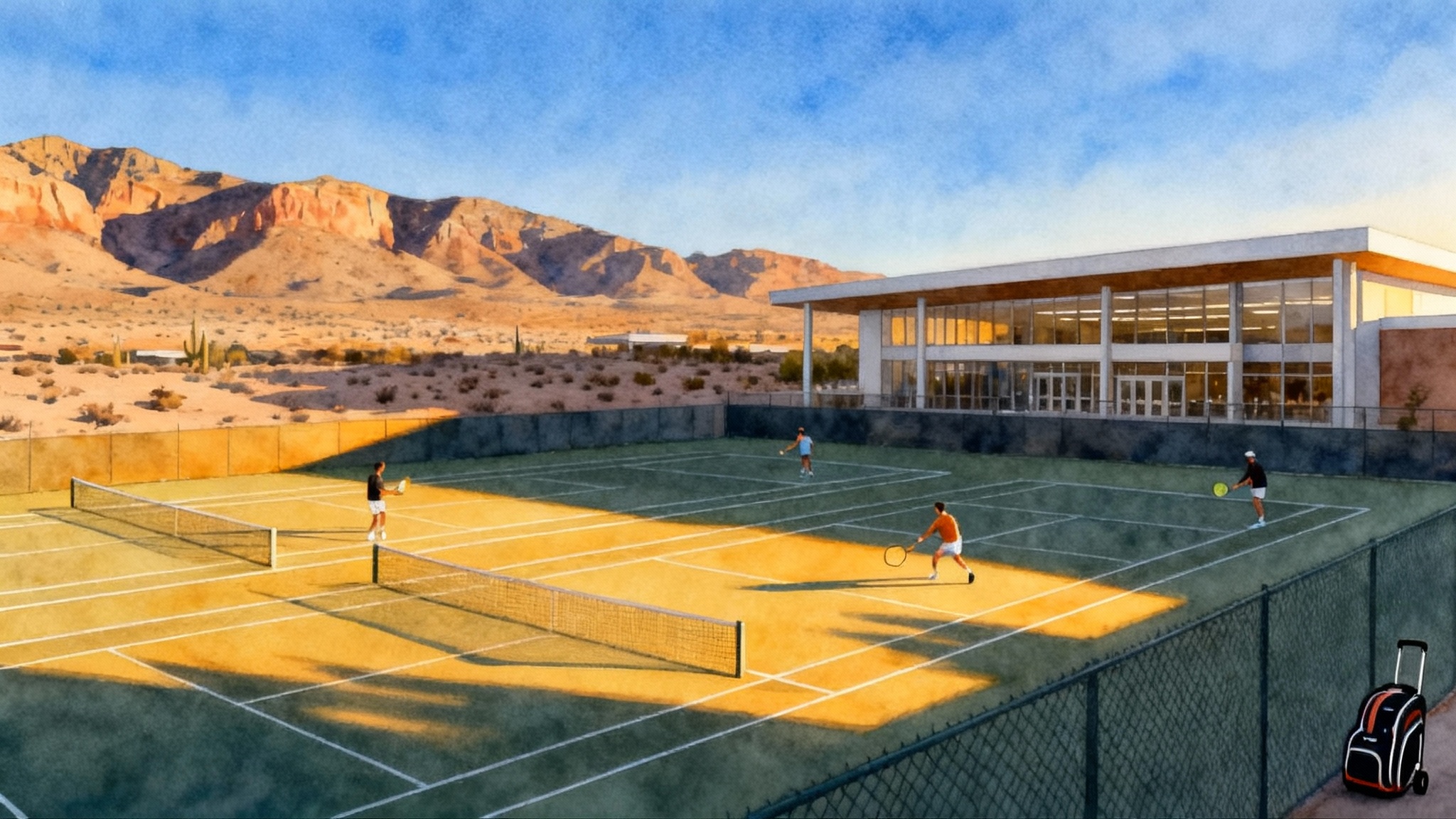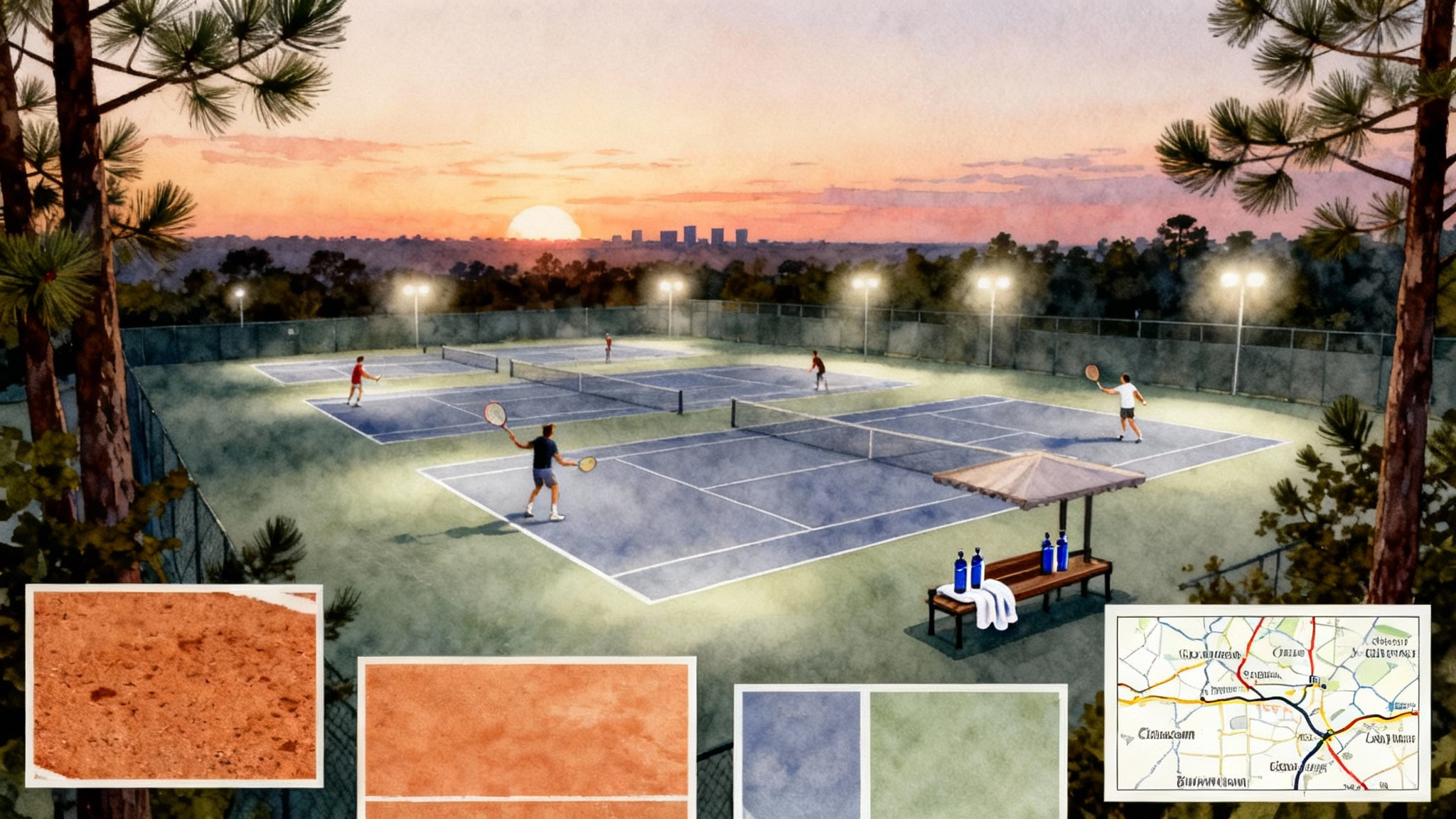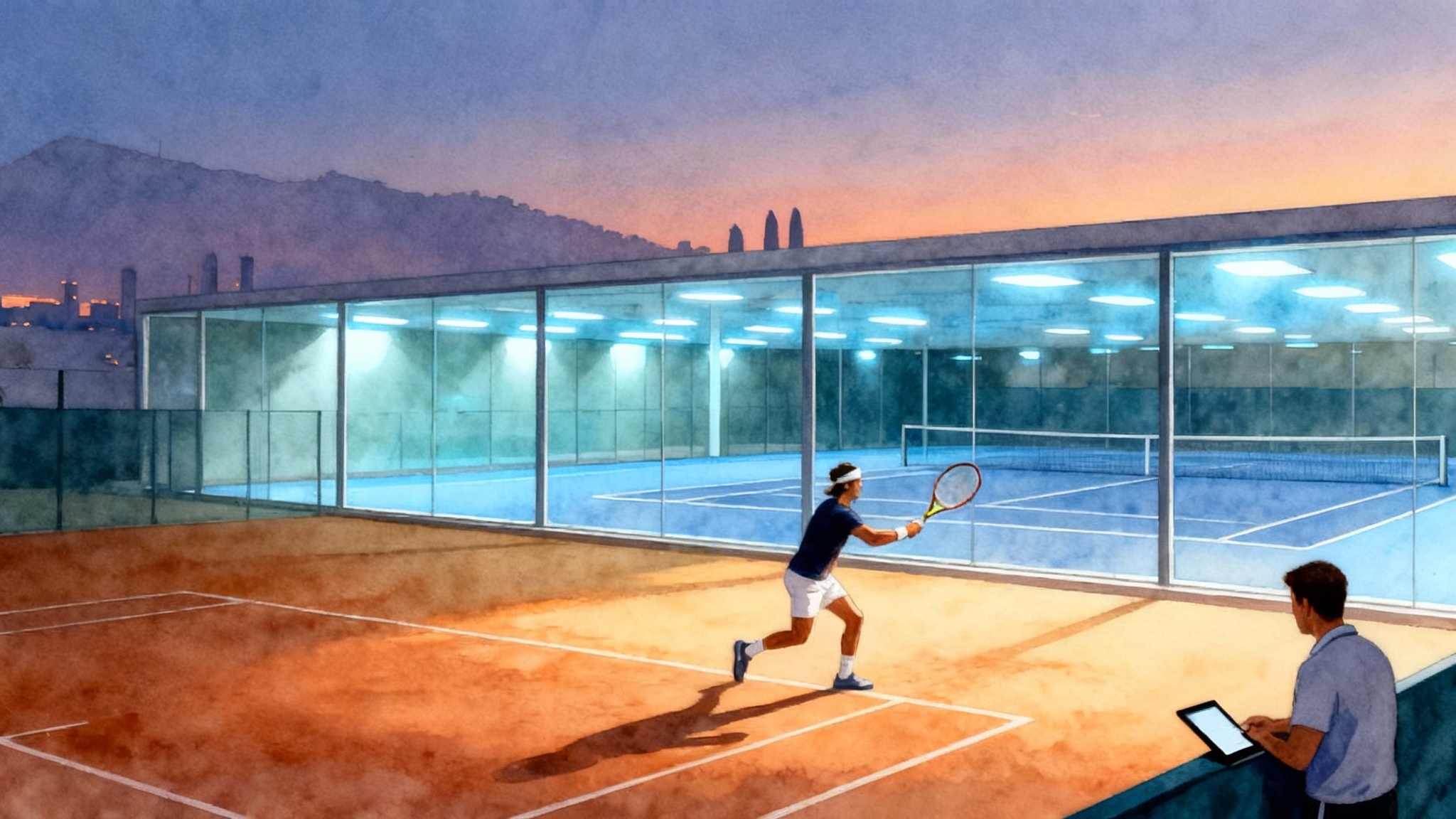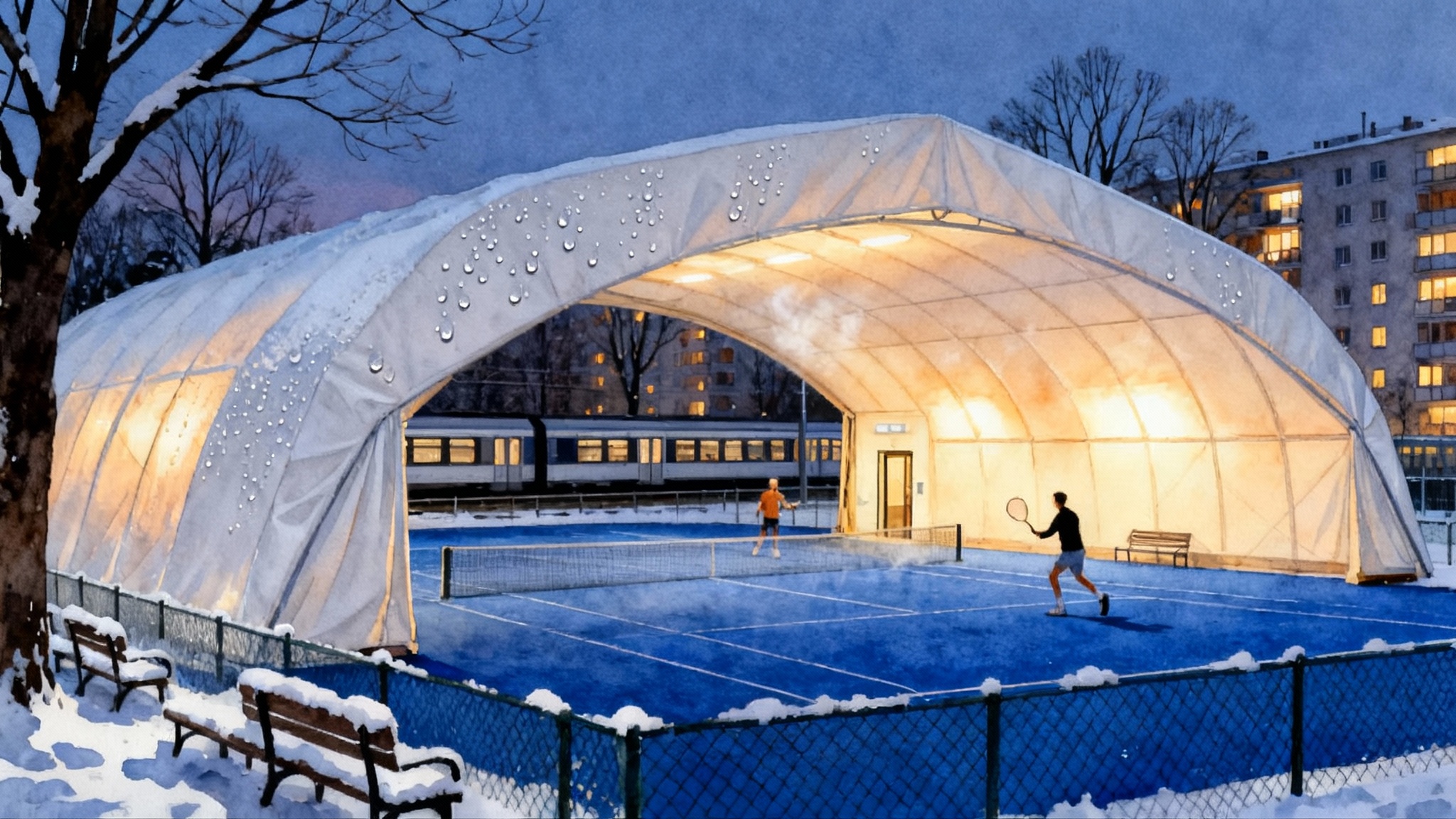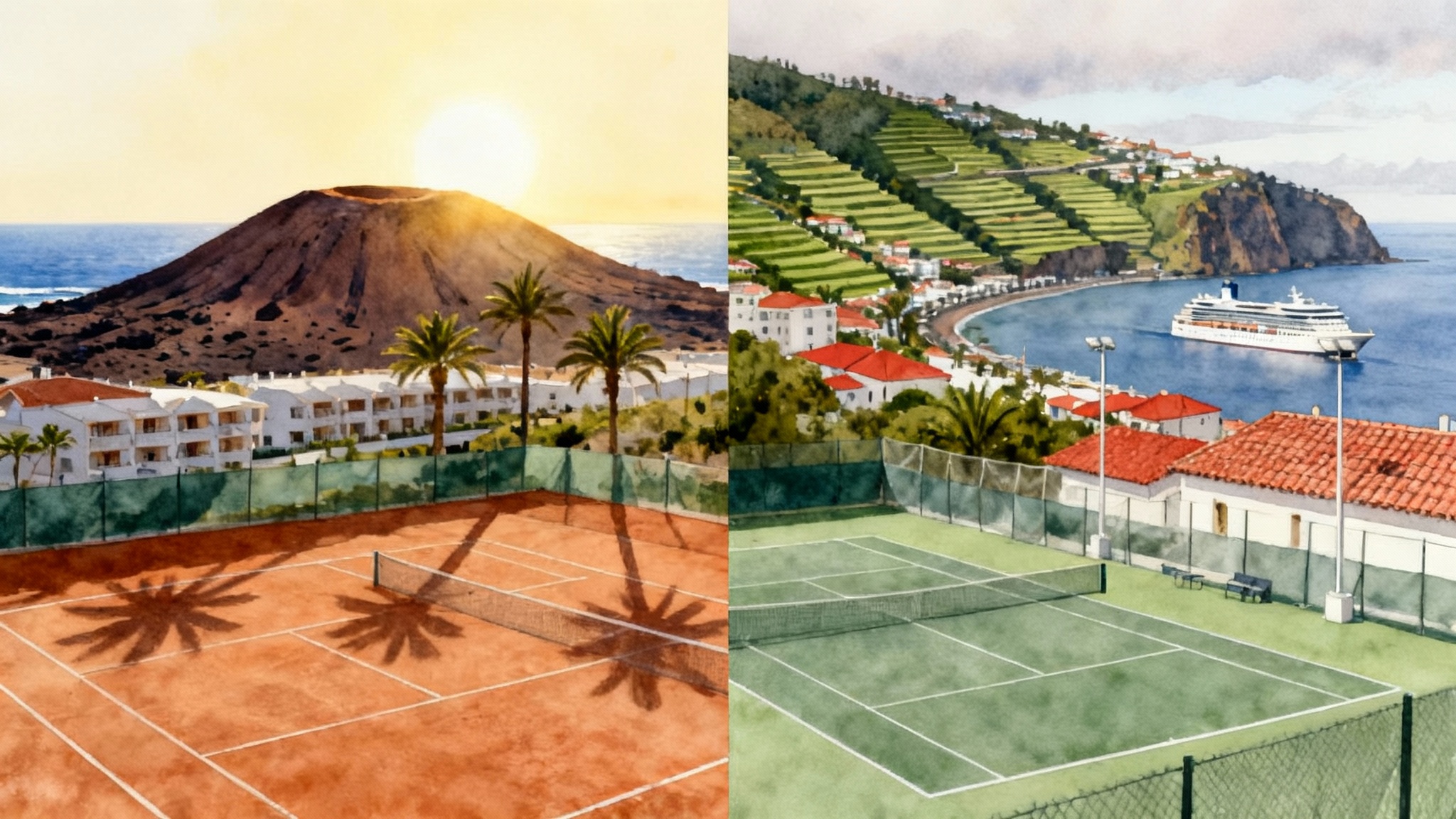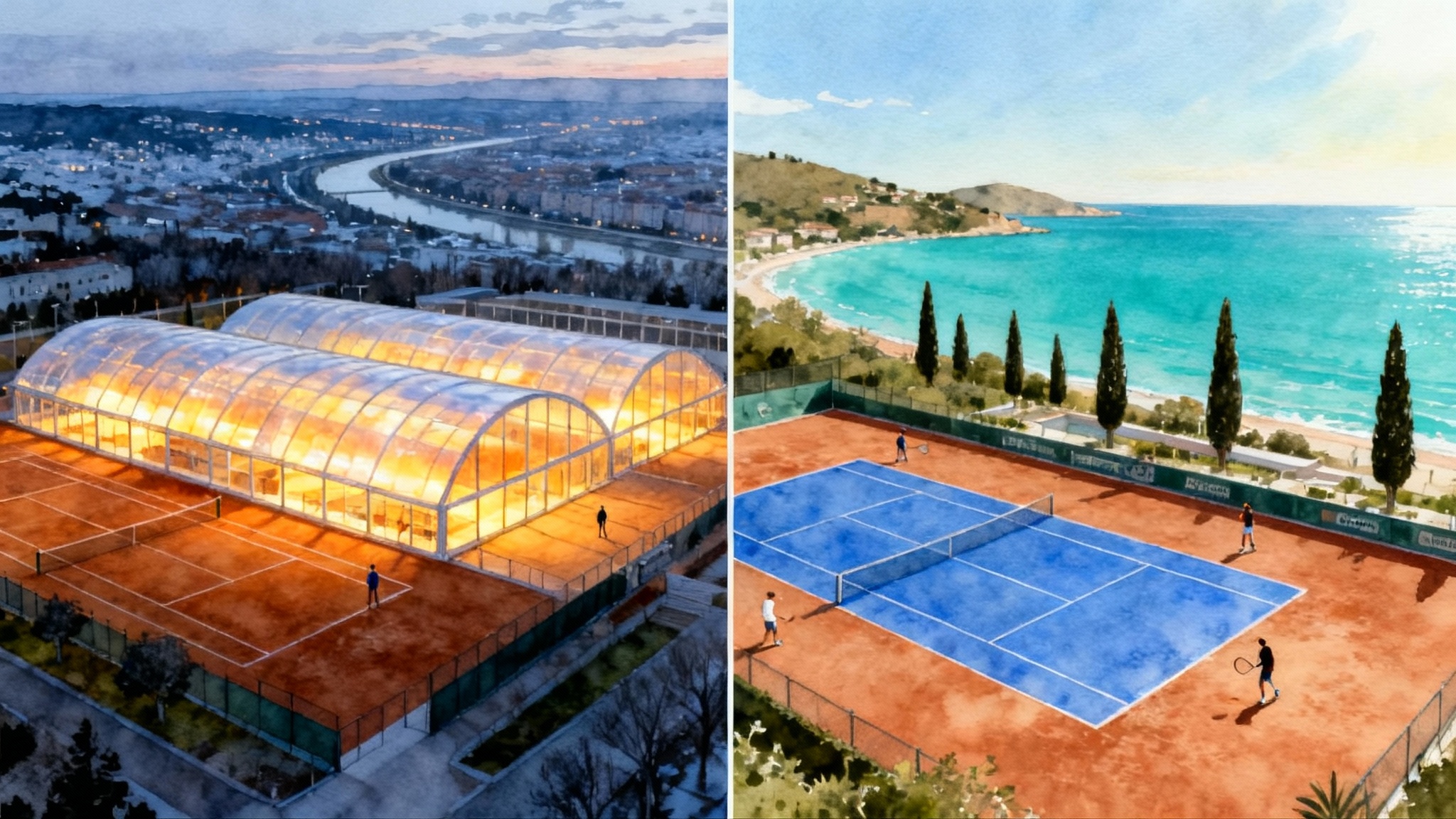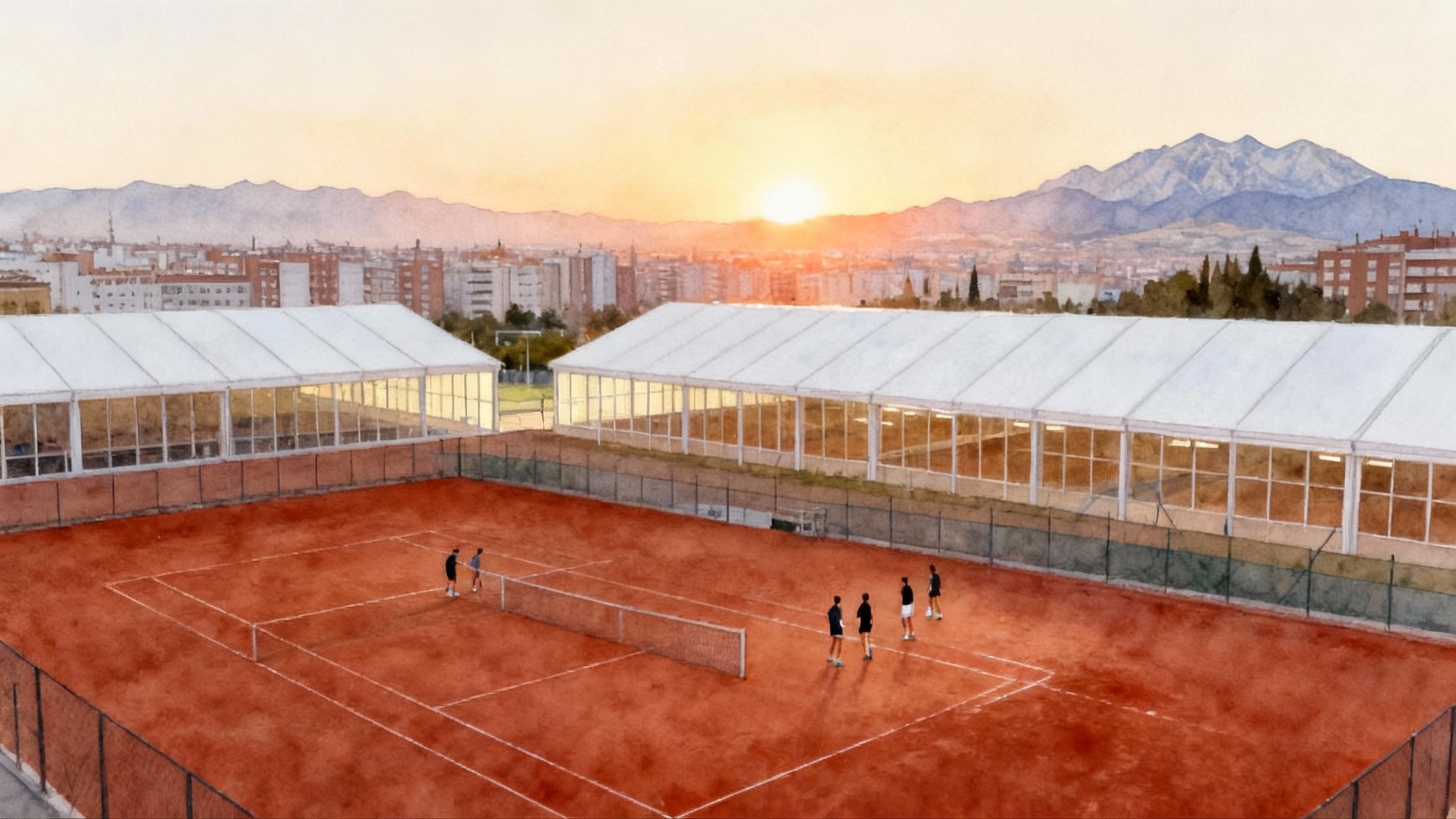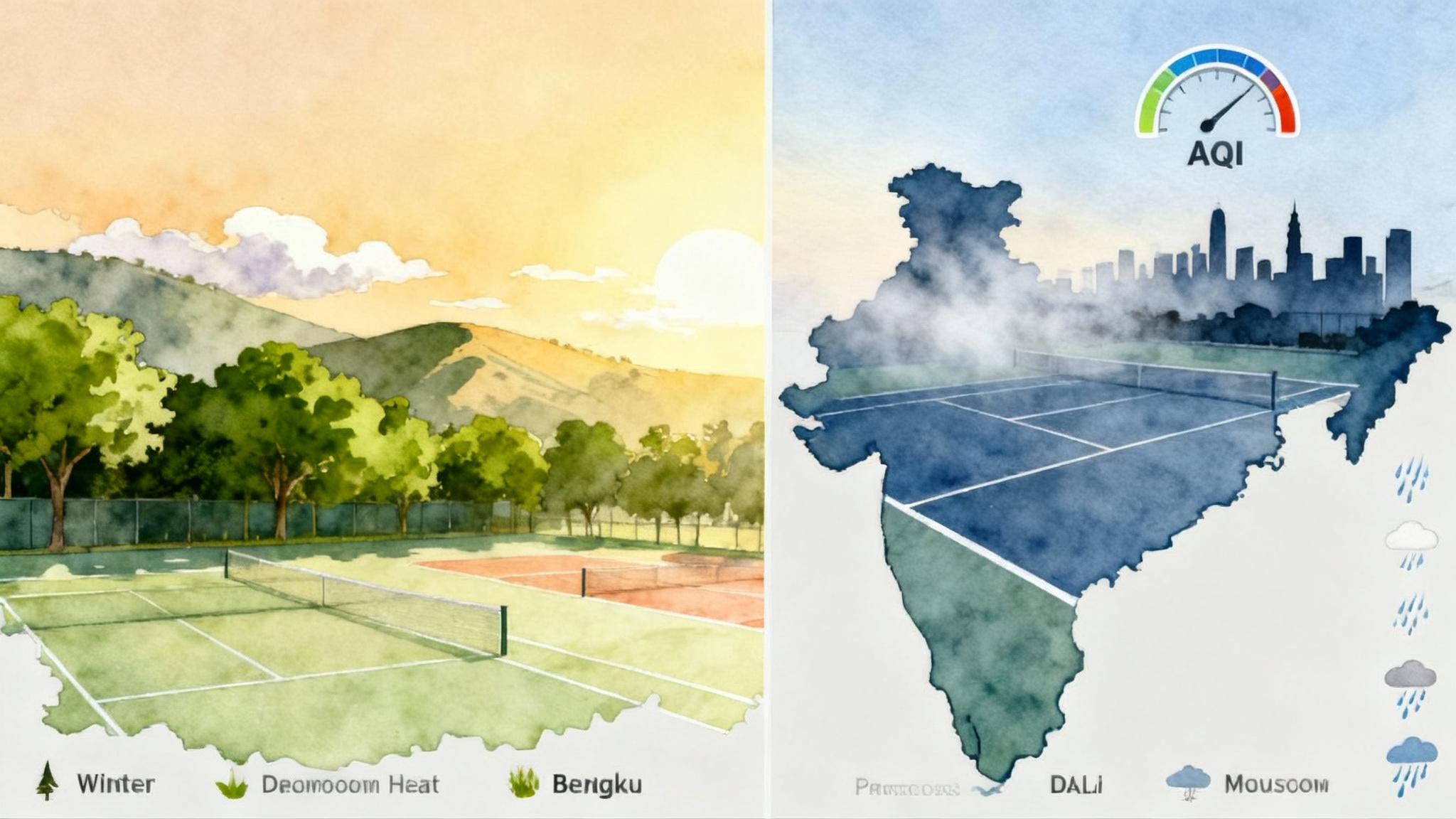Lisbon–Estoril 2025–26: The Practical Clay Plus City Base
Plan a family-friendly tennis escape on Portugal’s coast. Train on red clay at Clube de Ténis do Estoril, ride the seaside train from Lisbon, and use our month-by-month calendar, price bands, and training plans to maximize your trip.
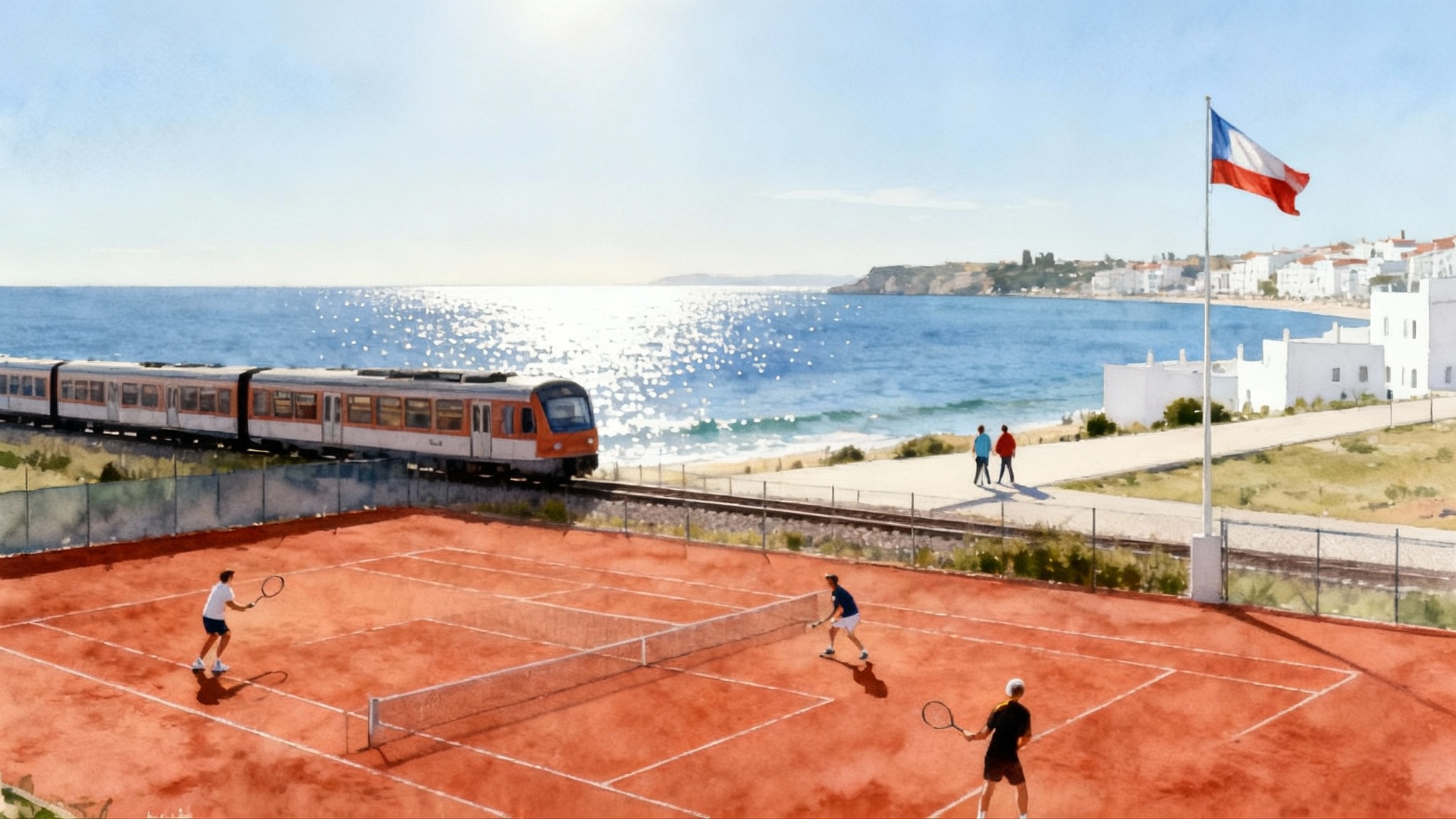
Why this coast works for tennis families in winter
If you want real clay underfoot without sacrificing city culture, the Lisbon–Cascais–Estoril corridor is a sweet spot. Winters are mild, courts are concentrated near the water, and the capital sits 35 to 45 minutes away by a scenic train. That means you can train on red clay in the morning, then spend the afternoon at museums or by the ocean without long, kid-unfriendly transfers. The hub for visiting players is Clube de Ténis do Estoril, a classic venue with red clay, a coaching culture, and easy access to beaches and parks. For broader winter planning across the region, compare our Tenerife vs Madeira winter bases.
This guide positions the coast as a practical base for 2025–26. You will find a month-by-month playability calendar, surface and booking notes, sample 5-day and 10-day plans for adults and juniors, match-play pathways that actually exist, transport logistics from Lisbon, price bands, and how to time spring travel so you enjoy the professional week without getting shut out of courts.
How to time your trip around spring events
The coast hosts the professional men’s tournament commonly called the Estoril Open at Clube de Ténis do Estoril each spring. In most years it falls in late April or early May. If you want maximum court access, avoid arriving during the main draw. Consider the week after finals, when infrastructure is still in top form but demand drops. For dates and format, check the official ATP Estoril Open dates. If your spring dates skew late April into May and you want a big-city alternative, see our Madrid shoulder-season clay guide.
Actionable timing tips:
- Best-value spring training window: mid March to mid April. Temperatures are comfortable, daylight is generous, and courts are more available than during tournament build-up.
- For families who also want to watch pros: arrive the first practice days only, book early morning courts at peripheral clubs, then shift to spectator mode midday.
- If you prioritize coaching access: choose mid May after the event. Coaches have more availability and the clay is freshly prepared.
Month-by-month playability calendar for 2025–26
Portugal’s west coast has maritime moderation. Expect cooler mornings, afternoon breezes, and fast-drying clay compared with inland Europe.
- January: Cool and changeable, with the most rain days of the year. Typical highs are in the mid teens Celsius, with about nine to ten hours of daylight. Mornings can be damp, but sun often breaks by late morning. Plan 11:00 to 15:00 training windows and keep a backup fitness session for rain days.
- February: Slightly drier, sunnier, and a touch warmer. Daylight passes ten hours. Still carry a light windbreaker. Afternoon light is excellent, and puddles dissipate quickly on well-drained courts.
- March: A strong month for visiting players. Daylight around twelve hours, green hillsides, intermittent showers. Schedule one lighter day per week for weather flexibility. Wind can pick up near Guincho Beach; book courts a bit inland or earlier in the day.
- April: Prime clay feel. Thirteen hours of daylight, fresh mornings, and often ideal ball bounce by midday. Tournament build-up can tighten availability late in the month at Clube de Ténis do Estoril. Reserve two to three weeks ahead and consider neighboring clubs for overflow.
- May: Warm but not hot, long days, relatively dry. Courts are at their best. Book mornings if you prefer heavier clay; late afternoons can play a fraction quicker.
- June: Warm and bright, close to fifteen hours of daylight. Northerly coastal breezes are common in the afternoon. Favor morning sessions if wind-sensitive. Evenings are perfect for match play.
- July: Warmest stretch, plenty of sun. The coastal breeze is your friend. Train by 9:00 to 11:00, swim midday, return for match play after 18:00.
- August: Still summer-warm with strong light. Tourist crowds peak on the beaches, yet courts remain manageable if you book early morning or evening slots. Hydration plans matter; clay stays kind on the joints even on hotter days.
- September: One of the best all-around months. Warm seas, easier bookings after summer holidays, roughly twelve and a half hours of daylight mid month. Excellent for families combining tennis and school-year remote work.
- October: A gentle shoulder month. Some rain returns, but many playable windows remain. Clay maintenance is good, and the afternoon light is golden. Keep a flexible plan for one rain interruption per week.
- November: Mild temperatures but wetter spells. Daylight around ten hours. Target midday training and use a ball machine session on synthetic surfaces if the red clay needs time to settle after showers.
- December: Cool, short days and occasional storms; still plenty of clear spells. Choose late morning slots, and add indoor strength or mobility if rain arrives.
Key microclimate note: the wind near the open coast can be stronger than in town. If you or your kids are wind sensitive, book in Estoril or central Cascais rather than the most exposed coastal corners for afternoon sessions.
Surfaces, clubs, and booking strategy
- Core surface: red clay. Clube de Ténis do Estoril is the anchor for visiting players who want classic European clay.
- Backup surfaces: synthetic clay and hard courts exist in the corridor. Having a secondary option helps during rainy weeks or tournament prep.
- Booking windows: in high-interest weeks, secure prime hours two to three weeks in advance. For standard weeks, a few days is fine.
- Local rhythm: mornings are favored by performance-focused players; club members often prefer late afternoon. If you want quiet courts, 11:00 to 15:00 outside summer school holidays is excellent.
Practical step: browse the Clube de Ténis do Estoril profile for facilities, contacts, and current programs.
Transport logistics: Lisbon to Estoril without drama
From central Lisbon, take the green or blue Metro to Cais do Sodré, then board the seaside suburban train to Estoril or Cascais. The ride hugs the river and the ocean, and typically takes 35 to 40 minutes. Check the official Cascais Line timetable by Comboios de Portugal, the national rail operator.
- Tickets: the reusable Viva Viagem card is Lisbon’s stored-value card. Load a few trips at once to simplify mornings.
- Frequency: trains run often during the day, so you can finish a museum visit, hop a train, and still make a 16:00 court.
- By car: a rental car can help if you are juggling nap schedules or strollers. Parking around Estoril varies by street and time; plan a ten-minute buffer.
- Ride-hailing: widely used and reasonable for short hops between hotel, courts, and beach.
- Walk-bike axis: a wide waterfront path links Estoril and Cascais. It is stroller friendly, and post-session walks help recovery.
Price bands for 2025–26
Prices vary by season and slot. Below are typical ranges in euro to help you budget.
- Court hire, red clay: 12 to 25 per hour off peak; 20 to 35 peak.
- Court hire, synthetic or hard: 10 to 20 off peak; 15 to 30 peak.
- Private coaching: 50 to 90 per hour for experienced staff; 90 to 130 for a head coach or high-performance specialist.
- Group clinics: 20 to 40 per person for 60 to 90 minutes, typically capped at four to six players.
- Hitting partner: 30 to 50 per hour, useful for extra reps or match warm-ups.
- Ball machine: 10 to 20 per hour, often plus balls.
- Stringing: 15 to 30 depending on string choice; bring your preferred string if you are sensitive to feel.
- Transfers: Lisbon to Estoril by train costs only a few euro per person; ride-hailing within the corridor is often under 15 for short trips.
- Family accommodation: one-bedroom apartment near Estoril or Cascais center often ranges 80 to 160 per night outside peak summer; two-bedroom apartments 120 to 240; hotels vary widely with sea views commanding premiums.
All figures are directional for 2025–26 and help with planning. Holiday weeks, high-demand spring weekends, and midsummer can sit at the upper end of these bands.
Sample training plans
The coastal rhythm is simple: move early, pause in the warmest hours for food or culture, return for evening match play. Each plan below assumes you stay within a fifteen-minute ride of Clube de Ténis do Estoril.
Adults, 5-day reset plan
- Day 1: Arrival loosen. 60 minutes of mobility and bands, 90 minutes of light rally and footwork ladders. Easy dinner and early night.
- Day 2: Clay foundations. Morning 2 hours on serve rhythm, depth targets, and cross-court building. Afternoon 45 minutes of strength with emphasis on glute and calf endurance. Evening set play to nine games.
- Day 3: Pattern day. Morning 2 hours of inside-out forehand patterns and first-strike returns. Late afternoon 60-minute hitting with new partner via club list. Sunset walk on the waterfront for recovery.
- Day 4: Situational day. Morning 90-minute point starts from 30–30 and 15–30. Add 45-minute ball machine session on neutral height and spin. Short video review in the evening.
- Day 5: Match day. Warm-up plus two sets. Cool down in the ocean or pool, then a relaxed city dinner.
Adults, 10-day build and test plan
- Day 1: Assessment hits and movement screen, 2 hours on court. Baseline video capture.
- Day 2: Serve and return block, 2 hours. Afternoon strength for ankles, hips, and trunk.
- Day 3: Rally tolerance, 2 hours. Evening tie-breaks with rotating partners.
- Day 4: Off-court Lisbon. Light jog, museum or river walk. Optional 60-minute easy hit.
- Day 5: Transition and approach patterns, 2 hours. Afternoon doubles skills clinic.
- Day 6: Match ladder entry. One competitive match arranged through the club. Recovery swim.
- Day 7: Rest morning, then 90-minute technical tune-up. Video check.
- Day 8: Second serve pressure day with targets and plus-one plans. Evening practice set.
- Day 9: Competition day. Two-set match or one full practice match plus tie-breaks.
- Day 10: Consolidation. 90 minutes of favorite patterns, exit video, and next-step plan for home.
Juniors, 5-day fun with purpose plan
- Day 1: Games-first assessment. 90 minutes of cooperative to competitive progressions, agility relays. Beach play in the afternoon.
- Day 2: Serve toss and rhythm, approach-and-volley games. Team relay on the waterfront path for aerobic fun.
- Day 3: Cross-court consistency challenge, ladder matches to four games. Parents schedule a museum or pastry stop to keep energy positive.
- Day 4: Match play in age-appropriate sets. Sportsmanship and routines between points. Ice cream recovery walk.
- Day 5: Mixed doubles festival with parents, then certificate moment and beach picnic.
Juniors, 10-day skill plus autonomy plan
- Day 1: Baseline hits, mini-tennis control, and reaction games.
- Day 2: Serve fundamentals and return start positions; short scoring formats.
- Day 3: Footwork circuits and depth ladders; afternoon ocean play for coordination.
- Day 4: Light hit only; Lisbon tram ride and culture day.
- Day 5: Pattern discovery; juniors design one drill and present it.
- Day 6: Friendly match day with peer group; parents observe routines that will travel home.
- Day 7: Rest morning; scavenger walk along the promenade.
- Day 8: Target serving and plus-one rally plans; short fitness circuit.
- Day 9: Formal match with a simple goal, such as first serve percentage.
- Day 10: Celebration festival; games, doubles, and awards.
Match-play pathways that actually work
The corridor is social, and visitors can find competitive ball without joining a team for months. Here is how to do it:
- Club mix-ins: ask for the weekly open doubles or singles ladder at your chosen club. These are low-friction entries to meet players at your level.
- Universal Tennis Rating events: many clubs host small events that use the Universal Tennis Rating framework. These offer level-based matches without waiting for a full tournament.
- Hitting-roster texting: leave your contact with the tennis desk. Regulars are often happy to slot a visitor in for an evening set.
- Private match arranging: book a hitting partner for the first session, then branch into peer matches once level is clear.
Off-court coastal experiences that support tennis
- Cascais promenade: after a morning session, stroll the flat path between Estoril and Cascais. It is stroller friendly, and perfect for calming kids before naps.
- Guincho Beach: a dramatic beach a short ride away. Go for sand play and photos rather than a full beach day if the wind is up; save your legs for tennis.
- Boca do Inferno cliffs: a short stop with sea views, best early evening.
- Sintra half day: palaces and forested hills just inland. Choose a single palace to avoid the all-day queue shuffle, then head back to the coast.
- Lisbon culture: Jerónimos Monastery, riverfront parks, and a pastry stop. Keep museum visits to ninety minutes to fit around training windows.
- Food that helps recovery: grilled fish, vegetable rice, and citrus are easy on travel stomachs. Families can stock apartments with yogurt, fruit, and simple proteins for pre-session breakfasts.
Booking moves that save time and money
- Book two anchors first: a morning court block for three days and a coach for two sessions. Fill the rest after arrival based on energy and weather.
- Request a wet-weather alternative surface. A fifty percent plan is better than a full day lost.
- Bring spare overgrips and your favored strings. Local stringers are good, but your brand may not be in stock the day you need it.
- For families, choose lodging within a fifteen-minute walk or a six-minute ride. Short commutes keep kids fresh.
Putting it together: three practical templates
- Culture-forward week: two morning sessions, one evening match, two city afternoons, one Sintra half day, one beach picnic. Works well in March or October.
- Performance tune-up: four morning drills, two match nights, one recovery day, one video session. Best in May or September.
- Family-first August: three short morning hits, beach breaks, and two twilight sets for the adults. Keep expectations light and focus on fun volume.
One last detail: where to start
If court access at your exact hour is tight, look one stop along the line or fifteen minutes inland. Keep a small kit in your bag for weather shifts: a light jacket, a cap, and a towel for windy afternoons. When in doubt about availability or partners, start with the Clube de Ténis do Estoril profile and message the tennis desk.
Conclusion
Lisbon–Estoril gives you real clay feel with a capital city’s energy, a coastline that encourages smart recovery, and logistics that do not punish families. Time your training just before or after the spring professional week, lock in a morning court block, and use the train to stitch tennis and culture together. Do those three things in 2025–26, and you will come home sharper, sun touched, and already planning the return trip.
